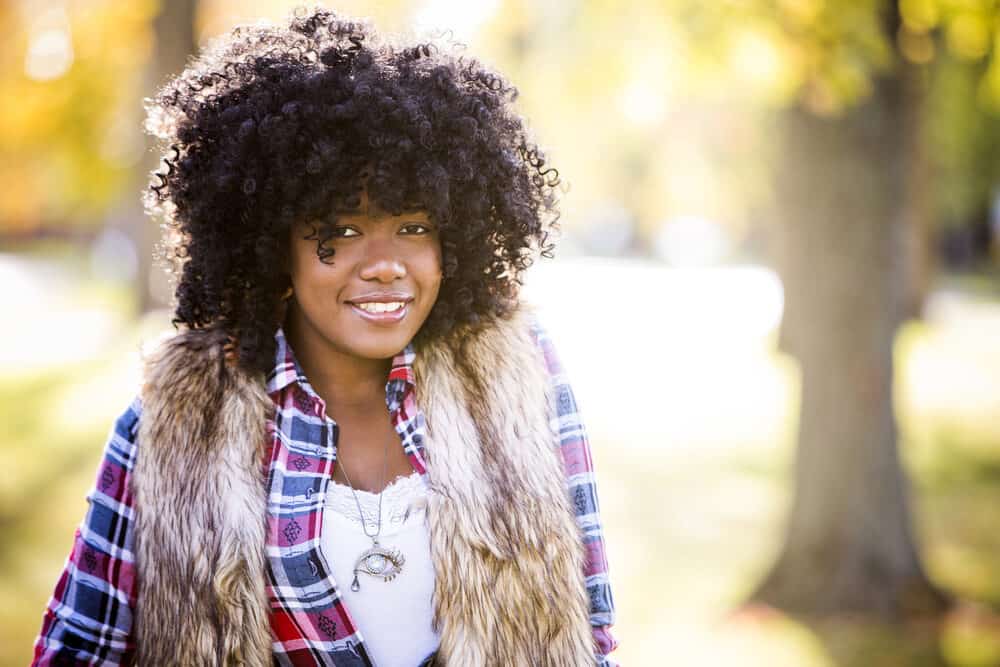
If you spend time researching haircare on Youtube, you’re bound to encounter women teaching you how to melt your lace wigs and slay an installation.
In the past several years, we’ve seen a massive swell in wig popularity, which has prompted many ladies to wonder who invented them.
In this article, we’ll look at just that! We'll cover who invented wigs and why, and we'll discuss the history of wigs and hairpieces.
Table of Contents
Who Invented Wigs?
Wigs were a part of various ancient civilizations. While it’s hard to say when the first one was invented, many historians credit ancient Egypt with the invention of wigs.
It's generally believed that ancient Egyptians wore wigs as early as 2700 BCE. Wigs were so integral to Egyptian society that they often buried the deceased with their wigs.

Egyptians made wigs out of a variety of materials. Some of the most common were:
- Human hair - The most high-quality wigs were made from human hair. While some individuals used their shaved their own natural hair to make wigs, others paid for other people's hair. Once they acquired the hair, it was painstakingly crafted to match the appearance of natural tresses (i.e., their own hair).
- Plant fibers - Plants were one of the cheaper alternatives for making wigs. Ancient Egyptians collected palm fibers to recreate the look of natural hair. Sometimes, plant fibers were used to bulk up wigs made from more expensive materials.
- Animal fur - Another widespread material for early Egyptian wigs was animal fur. They frequently used animal fibers like horsehair and sheep's wool. They would also mix animal fibers into human hair wigs to make them more affordable.

The History of Wigs
Wigs have popped up in nearly all corners of the world from ancient times to modern-day. This section will look at how various civilizations learned to embrace them. We’ll also look deeper into how Ancient Egyptians wore wigs.
The History of Wigs in Africa
As we mentioned before, Ancient Egyptians were among the first people to embrace wigs. The reasons behind this were either aesthetic, practical, or both.
Scalp Protection and Lice Prevention
Wigs protected Egyptians’ sensitive scalps from the harsh rays of the sun. In place of wig grips and wig caps, Egyptians held the wigs in place with sticky substances like beeswax and plant resin.
Some of the elaborate wigs created during this period were so massive that the person wearing them needed help moving around!
Another benefit of wigs is that they protect the wearer from lice. If lice ever infested their wig, they could just discard it and get another one! This ability was invaluable to the Egyptians.

Early Wig Care
When it came to wig care, the Egyptians had mastered the art. They cared for their wigs by coating them with beeswax, animal fats, and vegetable oils.
These emollients kept the wigs looking their best and helped them last longer. The hairpieces were perfumed with flower petals or spices and stored in dedicated boxes when not in use.
How Egyptians Styled Wigs
Egyptians were just as concerned with styling their wigs as they were with wig care.
They dyed their units with natural pigments like henna, juniper berries, and berry juice.
The wigs were often embellished with jewelry and styled into elaborate hairdos. The more ornate the hairstyle, the higher the wearer’s social position.
Egyptian Nobility Donned Curly Wigs
Ancient Egypt wasn't the only African nation to wear wigs. In fact, some pharaohs were inspired by the hairpieces worn by Nubian soldiers.
The Nubian soldiers modeled their wigs after the curly locks worn by their tribespeople. Queen Nefertiti was so infatuated with the look that the Nubian wig became her go-to style.

The History of Wigs in Europe
Wigs have had somewhat of a checkered past across Europe. Ancient Greeks and Romans were among the first European civilizations to embrace them.
Prostitution and Stigma
Roman prostitutes would bleach their hair or wear blonde wigs to indicate that they were available for work. Over time, Roman women also grew fond of blond locks and wore wigs made from the lightly colored hair of enslaved Germans.
Eventually, the stigma faded, and blonde wigs were officially mainstream!
However, wigs were already associated with lewd and lascivious behaviors, so the Christian Church denounced them, and wigs fell in popularity. After the Reformation, religious law started to relax, and consequently, wigs again rose in popularity.

Nobles Showed Their Wealth with Wigs
As time progressed, nobles and the ruling class began to incorporate wigs into their daily attire. They became a status symbol that enabled the elites to show their wealth openly.
Wigs continued to rise in popularity until the Middle Ages.
By then, times were hard, and most people didn’t have expendable income.
Wigs Concealed Disease and Balding
Modesty was in, although some people had more practical reasons for continuing to wear wigs. Before the advent of modern antibiotics, sexually transmitted diseases ran rampant.
As syphilis progresses, it causes various symptoms, including lesions and hair loss. As a result, baldness became associated with the illness.
Men with and without syphilis would hide their thinning strands with wigs and hairpieces to avoid discrimination. With the Renaissance period came a resurgence in wigs.
The focus was on soft, feminine beauty, and wearing wigs became a daily staple. By this time, most of the stigma surrounding wigs had disappeared, and they remained a beauty staple in the years that followed.

The History of Wigs in Asia
While it might not have been commonplace, a few East Asian societies have worn wigs - most notably, performers in ancient China and Japan.
In both countries, they were heavily associated with theatre and ceremonies. Female entertainers, like the Geisha, were the only women to explore wig-wearing.
In West and Central Asia, wigs were more common. Assyrians revered wigs so highly that some high-ranking women wore fake beards to political meetings.
They donned these facial wigs to command authority and respect. Although wigs were usually reserved for wealthy aristocrats and noblemen, ancient Assyrians used hairstyles to show:
- Social position
- Occupation
- Income level
In the Middle East, Jewish women adopted wigs to help them adhere to tradition. Jewish women are required to remain modest and cover their hair after marriage.
While most women wore shawls or headscarves to comply with the rule, some chose to cover their strands with wigs instead.

Wigs Today
Wigs have come a long way over the years, and they aren’t showing any signs of slowing down!
Surprisingly, the fundamental aspects of a wig haven't changed much over the centuries. The structure of a wig is simple. They're essentially a cap with extensions that you wear on your head.
Despite this, the materials that wigs are made of (and the ways they are constructed) have seen considerable improvements.
Most modern wigs are made by machines, although you can still find handmade wigs on the market. Synthetic wigs have also improved over the years. High-quality artificial fibers now look and behave just like natural strands.
Current trends focus on making wigs look more natural.
HD lace wigs have turned invisible parts and hairlines into a bonafide art form. Some present-day wigs recreate the look of your scalp and offer multiple parting options.
Today, people wear wigs for a variety of reasons. Some of the most common include:
- Protective styling
- Fashion
- Religious practices
- To hide hair loss

Who First Made Wigs?
It's difficult to pinpoint the exact inventor of wigs, but ancient Egyptians are generally credited with the invention of wigs, dating back as early as 2700 BCE. They created wigs to shield their bald heads from the sun and wore wigs to cover their head and hair for other various purposes.
Who Invented Human Hair Wigs?
The specific individual who invented human hair wigs cannot be identified. However, ancient Egyptians used human hair to create high-quality wigs, which they wore for various purposes, such as sun protection and making a social statement. They crafted wigs from human hair to closely match the appearance of natural hair.
Who Was the First Person to Wear a Wig?
It is not possible to identify the exact first person to wear a wig. However, wearing wigs dates back to ancient civilizations such as Egypt. Wigs were also used by other ancient cultures, including Greeks, Assyrians, Romans, and Phoenicians, at various times.

Were Wigs Originally for Men?
Wigs were not exclusively for men, as both men and women in ancient civilizations, such as Egypt, wore wigs for various purposes. However, men have used wigs throughout history, and their usage increased in the late 16th century due to a syphilis outbreak that caused extensive hair loss. Wigs were used to cover syphilis sores, highlighting that they served practical purposes for men in particular instances.
Who Invented Modern Wigs?
Wigs have evolved over the years, with considerable improvements in materials and construction methods. Most modern wigs are machine-made, although some handmade wigs are still available.
Synthetic wigs have also improved significantly, with high-quality artificial fibers mimicking the appearance and behavior of natural hair. Today's wig manufacturers continue to innovate, focusing on making wigs look more natural and catering to various needs and preferences.
Who Invented Lace Front Wigs?
Lace front wigs are a modern development in wig-making technology, featuring a thin, transparent lace material along the hairline that creates a more natural appearance.
While the exact origin or individual responsible for the invention of lace front wigs has yet to be discovered, several sources, including Wikipedia, suggest that Louis XIII adopted the modern wig to cover his balding head.
- How Much Should a Good Wig Cost?
- What to Use Instead of Hair Glue
- How Long Do Lace Front Wigs Stay On
- Do Most Black Women Wear Wigs?
We hope this article has shed some light on who invented wigs and how various countries have embraced them worldwide. Nowadays, men and women wear wigs for various reasons, including being able to achieve temporary fantasy hairstyles.
As wigs continue to skyrocket in popularity, wig manufacturers are continually pushing the limits of wig-making. We’re excited to see what they come up with next!




